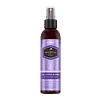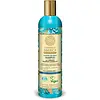What's inside
What's inside
 Key Ingredients
Key Ingredients

 Benefits
Benefits

 Concerns
Concerns

 Ingredients Side-by-side
Ingredients Side-by-side

Water
Skin ConditioningGlycerin
HumectantBiotin
AntiseborrhoeicHydrolyzed Collagen
EmollientCoffea Arabica Seed Oil
MaskingEthylhexylglycerin
Skin ConditioningCetrimonium Chloride
AntimicrobialMaltodextrin
AbsorbentMaltodextrin/Vp Copolymer
Pvp
Emulsion StabilisingPPG-3 Myristyl Ether
EmollientPolysorbate 20
EmulsifyingDehydroacetic Acid
PreservativeBenzoic Acid
MaskingDisodium EDTA
Sodium Hydroxide
BufferingSilicone Quaternium-22
Zea Mays Starch
AbsorbentPhenoxyethanol
PreservativePentaerythrityl Tetra-Di-T-Butyl Hydroxyhydrocinnamate
AntioxidantSodium Benzoate
MaskingCitric Acid
BufferingParfum
MaskingCitronellol
PerfumingCoumarin
PerfumingEugenol
PerfumingGeraniol
PerfumingHydroxycitronellal
PerfumingLimonene
PerfumingLinalool
PerfumingWater, Glycerin, Biotin, Hydrolyzed Collagen, Coffea Arabica Seed Oil, Ethylhexylglycerin, Cetrimonium Chloride, Maltodextrin, Maltodextrin/Vp Copolymer, Pvp, PPG-3 Myristyl Ether, Polysorbate 20, Dehydroacetic Acid, Benzoic Acid, Disodium EDTA, Sodium Hydroxide, Silicone Quaternium-22, Zea Mays Starch, Phenoxyethanol, Pentaerythrityl Tetra-Di-T-Butyl Hydroxyhydrocinnamate, Sodium Benzoate, Citric Acid, Parfum, Citronellol, Coumarin, Eugenol, Geraniol, Hydroxycitronellal, Limonene, Linalool
Water
Skin ConditioningSodium Coco-Sulfate
CleansingLauryl Glucoside
CleansingCocamidopropyl Betaine
CleansingSodium Chloride
MaskingPanthenol
Skin ConditioningHippophae Rhamnoides Fruit Water
SolventPhospholipids
Skin ConditioningGlycine Soja Oil
EmollientHippophae Rhamnoidesamidopropyl Betaine
CleansingHippophae Rhamnoides Fruit Oil
Skin ProtectingPineamidopropyl Betaine
CleansingArgania Spinosa Kernel Oil
EmollientLinum Usitatissimum Seed Oil
PerfumingGuar Hydroxypropyltrimonium Chloride
Skin ConditioningAbies Sibirica Needle Extract
PerfumingFlavocetraria Nivalis Extract
HumectantRhodiola Rosea Root Extract
EmollientPinus Sibirica Needle Extract
HumectantRosa Damascena Flower Water
MaskingRubus Arcticus Fruit Extract
AntioxidantBiotin/Folic Acid/Cyanocobalamin/Niacinamide/Pantothenic Acid/Pyridoxine/Riboflavin/Thiamine/Yeast Polypeptides
Skin ConditioningSodium PCA
HumectantSodium Lactate
BufferingArginine
MaskingAspartic Acid
MaskingPCA
HumectantGlycine
BufferingAlanine
MaskingSerine
MaskingValine
MaskingProline
Skin ConditioningThreonine
Isoleucine
Skin ConditioningHistidine
HumectantPhenylalanine
MaskingHydrolyzed Wheat Protein
Skin ConditioningCitric Acid
BufferingBenzyl Alcohol
PerfumingDehydroacetic Acid
PreservativeSodium Benzoate
MaskingPotassium Sorbate
PreservativeParfum
MaskingCI 15985
Cosmetic ColorantCI 16255
Cosmetic ColorantCI 19140
Cosmetic ColorantWater, Sodium Coco-Sulfate, Lauryl Glucoside, Cocamidopropyl Betaine, Sodium Chloride, Panthenol, Hippophae Rhamnoides Fruit Water, Phospholipids, Glycine Soja Oil, Hippophae Rhamnoidesamidopropyl Betaine, Hippophae Rhamnoides Fruit Oil, Pineamidopropyl Betaine, Argania Spinosa Kernel Oil, Linum Usitatissimum Seed Oil, Guar Hydroxypropyltrimonium Chloride, Abies Sibirica Needle Extract, Flavocetraria Nivalis Extract, Rhodiola Rosea Root Extract, Pinus Sibirica Needle Extract, Rosa Damascena Flower Water, Rubus Arcticus Fruit Extract, Biotin/Folic Acid/Cyanocobalamin/Niacinamide/Pantothenic Acid/Pyridoxine/Riboflavin/Thiamine/Yeast Polypeptides, Sodium PCA, Sodium Lactate, Arginine, Aspartic Acid, PCA, Glycine, Alanine, Serine, Valine, Proline, Threonine, Isoleucine, Histidine, Phenylalanine, Hydrolyzed Wheat Protein, Citric Acid, Benzyl Alcohol, Dehydroacetic Acid, Sodium Benzoate, Potassium Sorbate, Parfum, CI 15985, CI 16255, CI 19140
Ingredients Explained
These ingredients are found in both products.
Ingredients higher up in an ingredient list are typically present in a larger amount.
Citric Acid is an alpha hydroxy acid (AHA) naturally found in citrus fruits like oranges, lemons, and limes.
Like other AHAs, citric acid can exfoliate skin by breaking down the bonds that hold dead skin cells together. This helps reveal smoother and brighter skin underneath.
However, this exfoliating effect only happens at high concentrations (20%) which can be hard to find in cosmetic products.
Due to this, citric acid is usually included in small amounts as a pH adjuster. This helps keep products slightly more acidic and compatible with skin's natural pH.
In skincare formulas, citric acid can:
While it can provide some skin benefits, research shows lactic acid and glycolic acid are generally more effective and less irritating exfoliants.
Most citric acid used in skincare today is made by fermenting sugars (usually from molasses). This synthetic version is identical to the natural citrus form but easier to stabilize and use in formulations.
Read more about some other popular AHA's here:
Learn more about Citric AcidDehydroacetic Acid is fungicide and bactericide. It is used as a preservative in cosmetics. Preservatives help elongate the shelf life of a product.
Dehydroacetic Acid is not soluble in water.
Parfum is a catch-all term for an ingredient or more that is used to give a scent to products.
Also called "fragrance", this ingredient can be a blend of hundreds of chemicals or plant oils. This means every product with "fragrance" or "parfum" in the ingredients list is a different mixture.
For instance, Habanolide is a proprietary trade name for a specific aroma chemical. When used as a fragrance ingredient in cosmetics, most aroma chemicals fall under the broad labeling category of “FRAGRANCE” or “PARFUM” according to EU and US regulations.
The term 'parfum' or 'fragrance' is not regulated in many countries. In many cases, it is up to the brand to define this term.
For instance, many brands choose to label themselves as "fragrance-free" because they are not using synthetic fragrances. However, their products may still contain ingredients such as essential oils that are considered a fragrance by INCI standards.
One example is Calendula flower extract. Calendula is an essential oil that still imparts a scent or 'fragrance'.
Depending on the blend, the ingredients in the mixture can cause allergies and sensitivities on the skin. Some ingredients that are known EU allergens include linalool and citronellol.
Parfum can also be used to mask or cover an unpleasant scent.
The bottom line is: not all fragrances/parfum/ingredients are created equally. If you are worried about fragrances, we recommend taking a closer look at an ingredient. And of course, we always recommend speaking with a professional.
Learn more about ParfumSodium Benzoate is a preservative. It's used in both cosmetic and food products to inhibit the growth of mold and bacteria. It is typically produced synthetically.
Both the US FDA and EU Health Committee have approved the use of sodium benzoate. In the US, levels of 0.1% (of the total product) are allowed.
Sodium benzoate works as a preservative by inhibiting the growth of bacteria inside of cells. It prevents the cell from fermenting a type of sugar using an enzyme called phosphofructokinase.
It is the salt of benzoic acid. Foods containing sodium benzoate include soda, salad dressings, condiments, fruit juices, wines, and snack foods.
Studies for using ascorbic acid and sodium benzoate in cosmetics are lacking, especially in skincare routines with multiple steps.
We always recommend speaking with a professional, such as a dermatologist, if you have any concerns.
Learn more about Sodium BenzoateWater. It's the most common cosmetic ingredient of all. You'll usually see it at the top of ingredient lists, meaning that it makes up the largest part of the product.
So why is it so popular? Water most often acts as a solvent - this means that it helps dissolve other ingredients into the formulation.
You'll also recognize water as that liquid we all need to stay alive. If you see this, drink a glass of water. Stay hydrated!
Learn more about Water